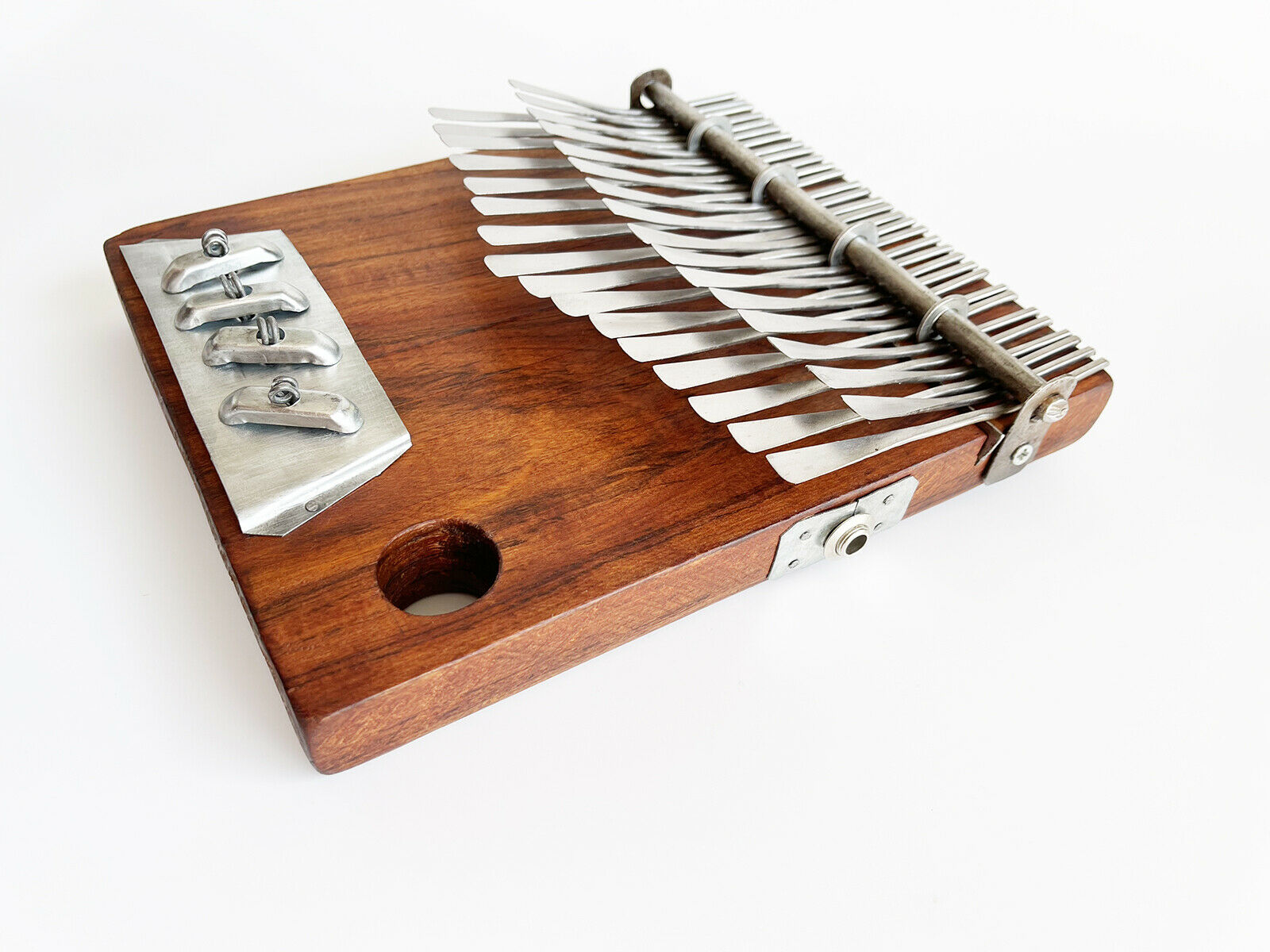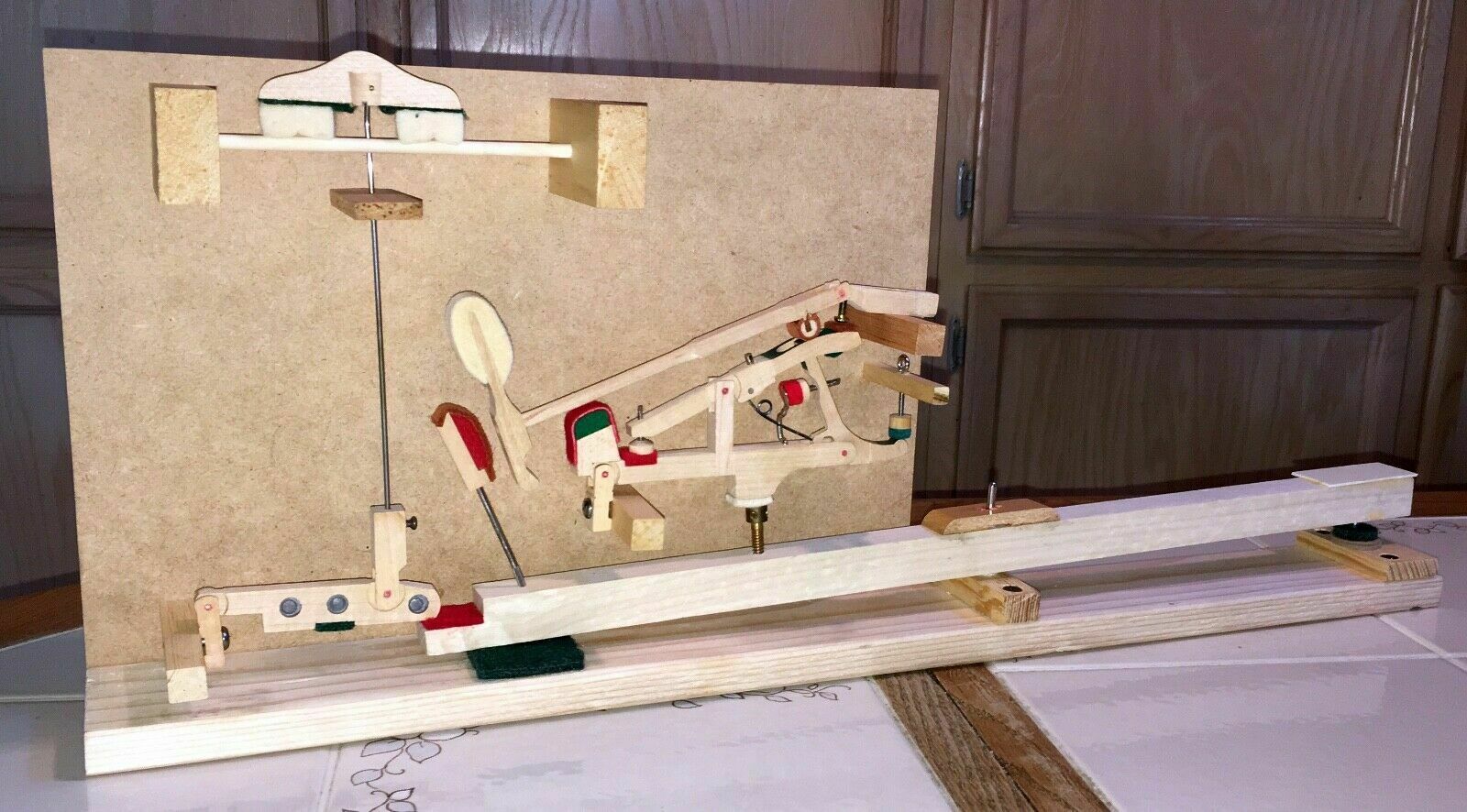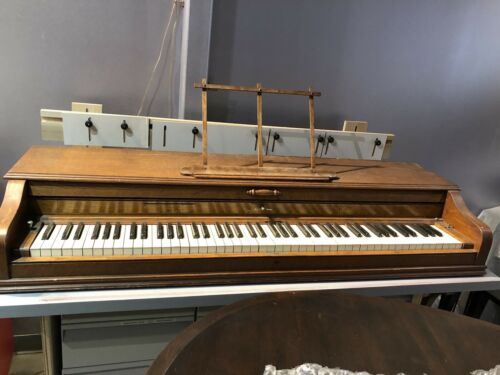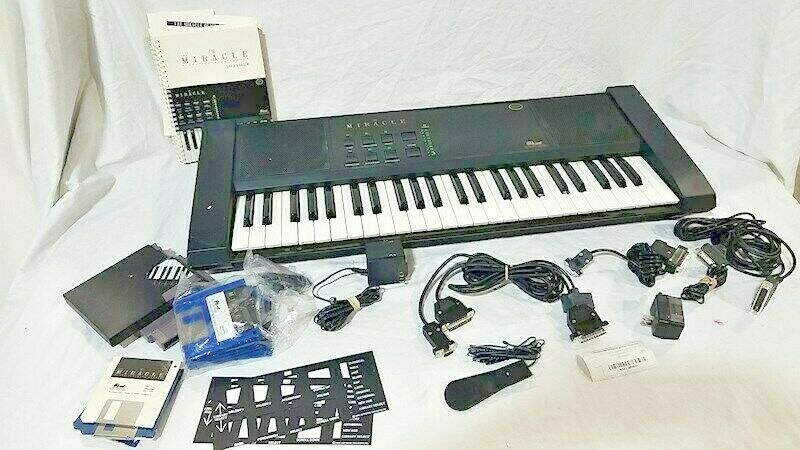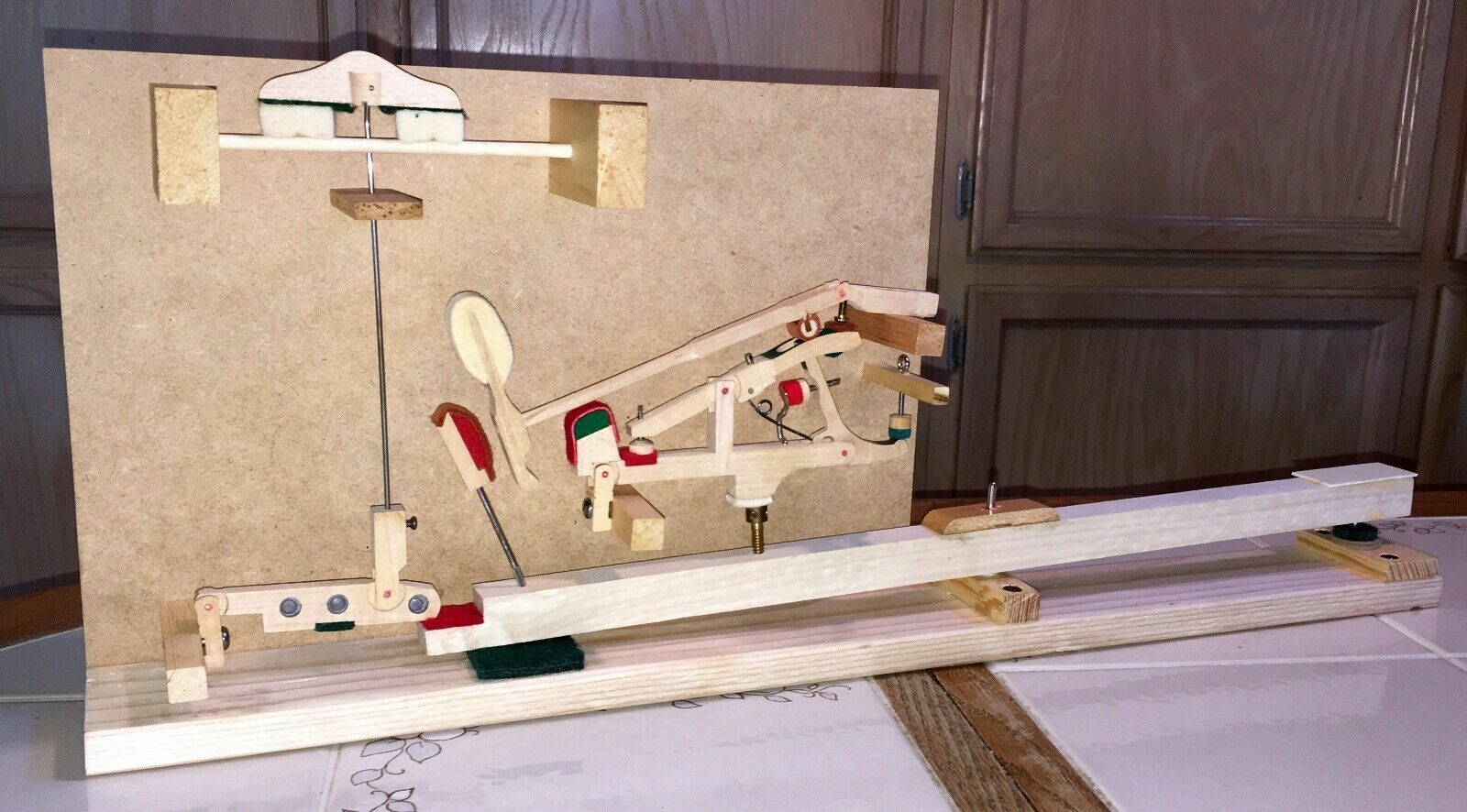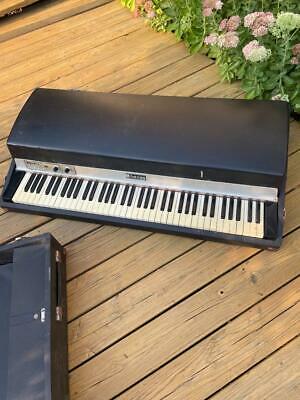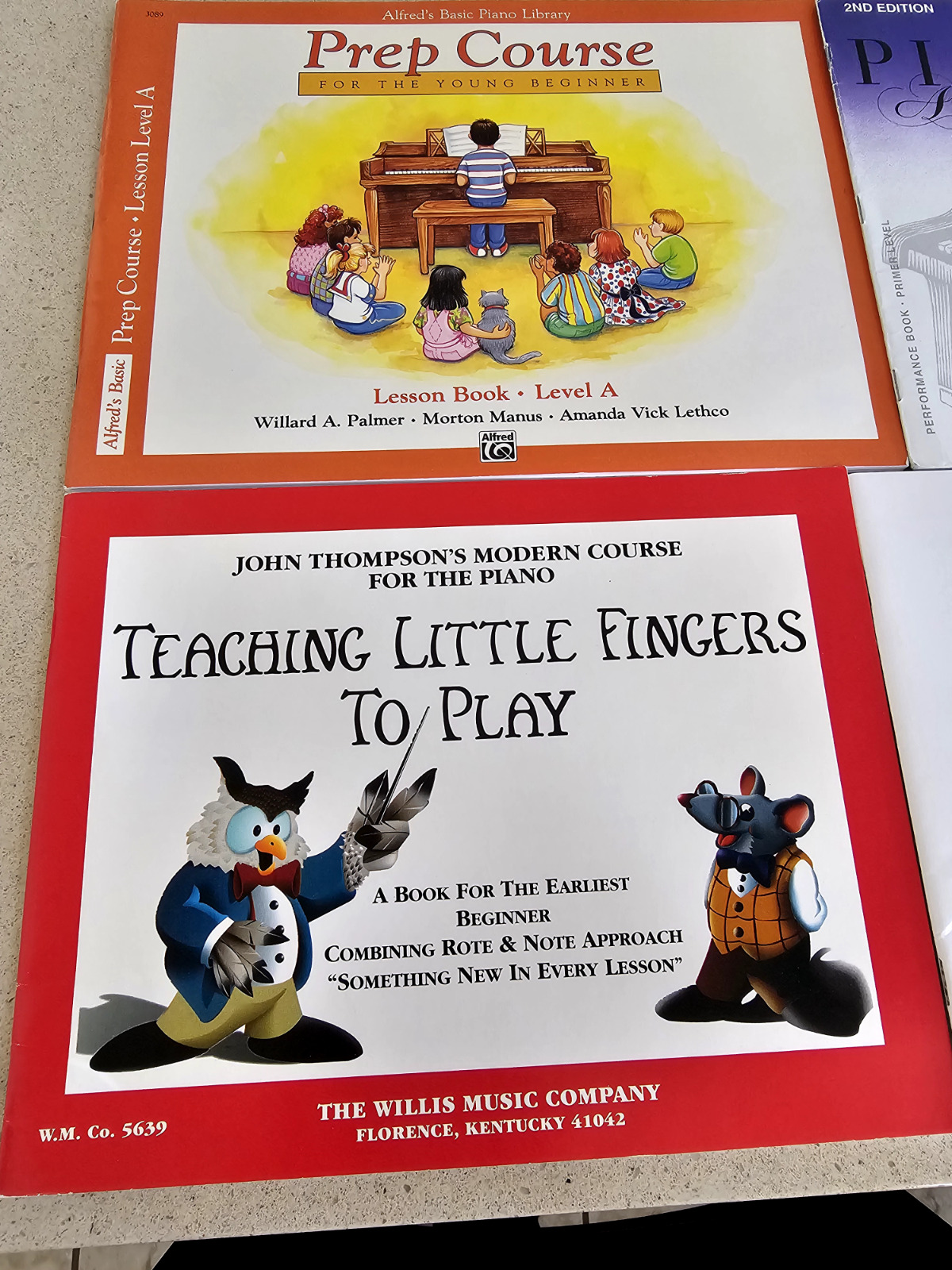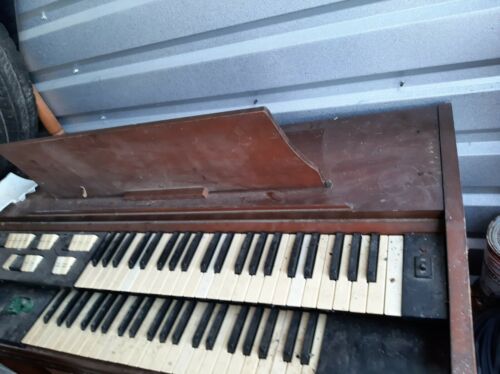-40%
32 Key ELECTRIC Njari TRIPLE Senor Mbira Thumb Piano Kalimba Handmade ~Zim
$ 100.32
- Description
- Size Guide
Description
32 Key Shona Njari ELECTRIC TRIPLE Sensor Pickup Mbira v2 - Finger Piano Kalimba Handmade in Zimbabwe by C.VambeOur newest Mbira release (August 2021)
32 metal rounded keys
Built in TRIPLE sensor audio pickup and phono jack provides excellent amplified fidelity.
Njari tuned by Cypren B. with bright sound
Compare this to other non-electric mbiras online retailing for over 0 for non electric.
All mbiras are shipped out quickly via USPS priority mail and arrive in just a few days within the US.
All mbiras finished with oil that is completely 100% natural, no toxins, is food safe and contains no chemical stains or preservatives (US Product)
Built in 1/4 inch TRIPLE sensor audio pickup for premium sound amplification. One sensor under the left. middle and right of the board. Audio pickup and jack provides excellent amplified fidelity in this new style of workshop assembled Mbira. Expands the musical possibilities such as routing the sound output through various effects boxes or simply plugging into your favorite amp for studio or live performance. I recently returned from Zimbabwe where I had a chance to meet with Cypren Vambe and his sons for a short performance which was just fantastic. Hand made by Cypren from a block of Mukwa hardwood that is carefully selected. This Mbira has 32 metal keys and this has a particularly great tone to it with decent sustain. When each key is made they use a master mbira to adjust each key to sound the same as that master mbiras keys ensuring it is tuned correctly. This is a Large full size mbira, check the measurements in the images. This is the primary instrument of the Shona Zezuru people of Zimbabwe and has been for hundreds of years where the instrument first originated. In a typical mbira band performance there would be 4 mbira players, one playing bass, another playing rhythm, a sub rhythm player, a lead and finally a dancer! It is quite entrancing to hear the various sections played together by experienced players. Compare this to other non-electric mbiras online retailing for over 0. Made from the same Shona mbira masters as those were but at a fraction of the price. Being born and raised in Zim I can assure you this is an authentic Zim-bira! The keys can be adjusted up/down/sideways on the board to alter the tune as you please. A good start to reading up on tuning is here: http://www.nscottrobinson.com/mbiratunings.php This could make a great gift. This includes a basic guide to mbira. Please note the mbira you receive may have a slightly different wood patina than the one pictured but will be very similar. I ship quickly. Thanks for looking.
Mbira
From Wikipedia, the free encyclopedia
In African music, the mbira (also known as Likembe, Mbila, Thumb Piano, Mbira Huru, Mbira Njari, Mbira Nyunga Nyunga, Karimba or Kalimba) is a musical instrument consisting of a wooden board to which staggered metal keys have been attached. It is often fitted into a resonator. In Eastern and Southern Africa there are many kinds of mbira, usually accompanied by the hosho. Among the Shona there are three that are very popular (see Shona music). The Mbira is usually classified as part of the lamellaphone family. It is also part of the idiophones family of musical instruments. In some places it is also known as a sanza.
In the late 1960s to early 70s sanza was the generic term used to describe these members of the lamellophone family. Mbira has now become so well known due to the work of Dumisani Maraire, Forward Kwenda, Ephat Mujuru and Paul Berliner that it has now replaced sanza as the generic term. Dr. Joseph H. Howard, owner of the largest collection of drums and ancillary folk instruments in the Americas, often stated it is "the instrument most typical of Africa." By this he meant that the instruments were only found in areas populated by Africans or their descendants. Babatunde Olatunji made a similar statement in his book "Musical Instruments of Africa." He states the mbira "a finger xylophone, is native to Africa and is common throughout the continent. It is known nowhere else except in parts of the Americas where it was taken by Africans."
Mbira Dzavadzimu
In Shona music, the mbira dzavadzimu ("voice of the ancestors", national instrument of Zimbabwe is a musical instrument that has been played by the Shona people of Zimbabwe for thousands of years. The mbira dzavadzimu is frequently played at religious ceremonies and social gatherings called mabira (sing. "bira").
A typical mbira dzavadzimu consists of between 22 and 28 keys constructed from hot- or cold-forged metal affixed to a hardwood soundboard (gwariva) in three different registers?two on the left, one on the right.
While playing, the little finger of the right hand is placed through a hole in the bottom right corner of the soundboard, stabilizing the instrument and leaving thumb and index finger of the right hand open to pluck keys in the right register from above and below. The left hand is cupped around the left side of the instrument, with all fingers but the thumb placed behind the instrument. Both registers on the left side of the instrument are played with the left thumb.
Bottle caps, shells or other objects ("machachara" are often affixed to the soundboard to create a buzzing sound when the instrument is played. In a traditional setting, this sound is considered extremely important, as it is believed to attract the ancestral spirits.
During a public performance, an mbira dzavadzimu is frequently placed in a deze (calabash resonator) to amplify its sound.
Religious and social significance
The mbira dza vadzimu is very significant in Shona religion and culture, considered a sacred instrument by natives. It is usually played to facilitate communication with ancestral spirits.
Tuning
Tunings vary from family to family, referring to relative interval relationships and not to absolute pitches. The most common tuning is Nyamaropa, the western Mixolydian mode. Names may also vary between different families. For example, Garikai, whose family plays an "mbira orchestra" that has seven different tunings, each starting on a different interval of the same seven-note scale, calls his version of "Nyamaropa" the "Nhemamusasa" tuning. There are seven tunings that Garikai uses: Bangidza, Nyamaropa, Nhememusasa, Chakwi, Taireva, Mahoroho, and Mavembe (all of which are also names of traditional songs save for Mavembe).
Common names for tunings are:
Dambatsoko (Ionian mode) - Played by the Mujuru family. The name refers to their ancestral burial grounds.
Dongonda - usually a Nyamaropa tuned mbira with the right side notes the same octave as the left (an octave lower than usual).
Katsanzaira (Dorian mode) - The highest pitch of the traditional mbira tunings. The name means "the gentle rain before the storm hits".
Mavembe (also: Gandanga) (Phrygian mode) - Sekuru Gora claims to have invented this tuning at a funeral ceremony. The mourners were singing a familiar song with an unfamiliar melody and he went outside the hut and tuned his mbira to match the vocal lines. Other mbira players dispute that he invented it.
Nemakonde (Phrygian mode) - Same musical relationship as the mavembe, but the nemakonde tuning is a very low pitched version.
Saungweme (Whole tone)
Mbira Nyunga Nyunga
Jeke (Jack) Tapera introduced the Mbira Nyunga Nyunga in the 1960s from Tete province of Mozambique to Kwanongoma College of African music (now United College of Music) in Bulawayo. Two keys were then added to make fifteen (Chirimumimba, 2007), in two rows. The mbira nyunga nyunga is similar in construction to the Mbira Dzavadzimu, but has no hole in the soundboard. Key pitch radiates out from the center, rather than from left to right.
Zimbabwe's Dumisani Maraire originated mbira nyunga nyunga number notation. The upper row keys (from left) are keys 2, 4, 6, 8, 10, 12, and 14 while the bottom row keys are notated as 1, 3, 5, 7, 9, 11, 13, and 15. Maraire brought awareness of this instrument to the United States when he came to the University of Washington as a visiting artist from 1968-1972.
Recently a Midlands State University (Gweru, Zimbabwe) lecturer in the department of music and musicology has suggested a letter notation; the upper keys as (from first left upper key) E, D, C, F, C, D, and E and the lower or bottom keys as (from the first lower key) A, G, F, A, F, C, D, and E. But the Maraire number notation has remained the internationally accepted system (Chirimumimba, 2007).
Mark Holdaway of Kalimba Magic has introduced a graphic form of tablature for the karimba, and traditional karimba tunes as well as modern songs and new compositions and exercises are available in this tablature.
terapeak
